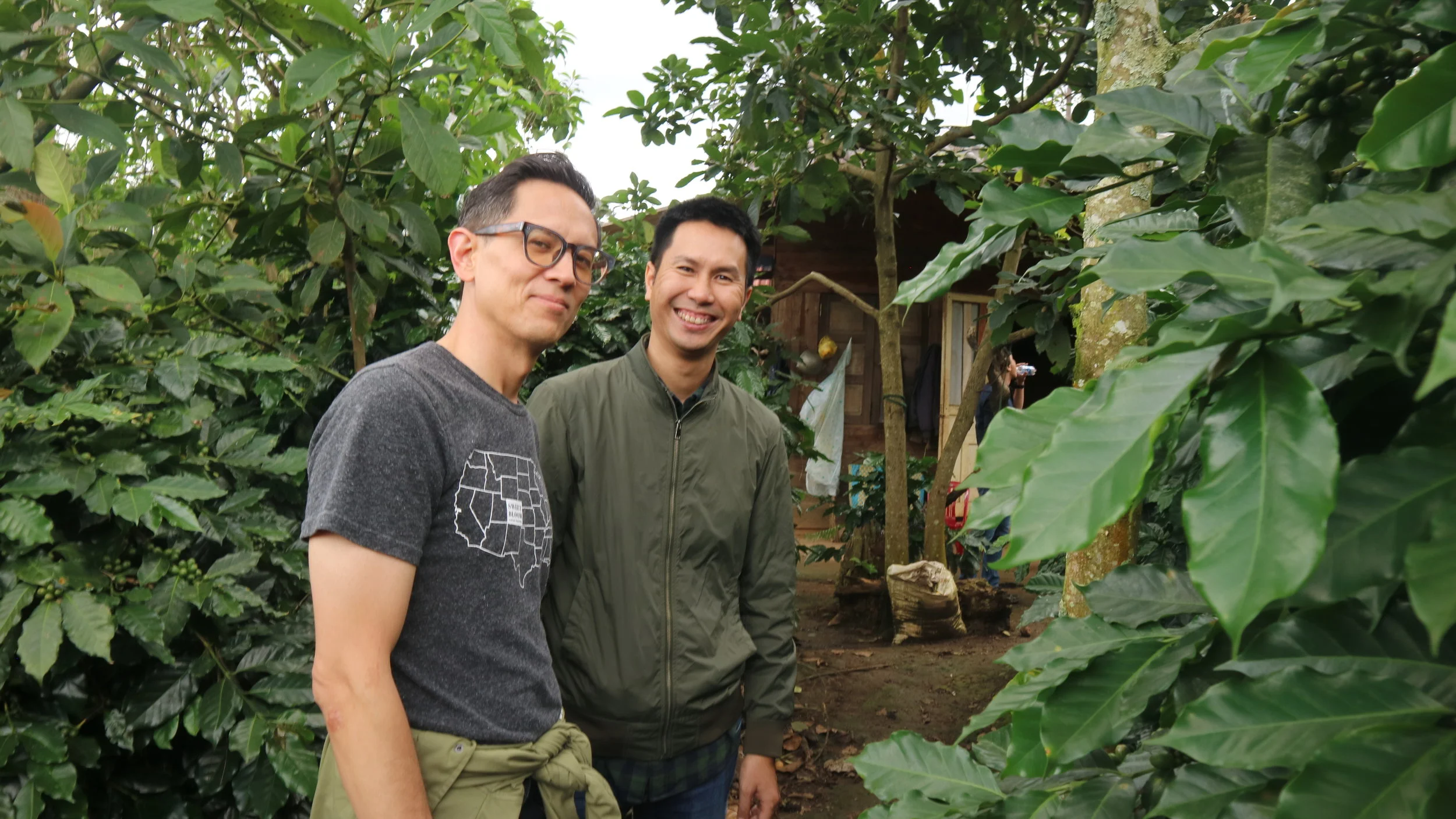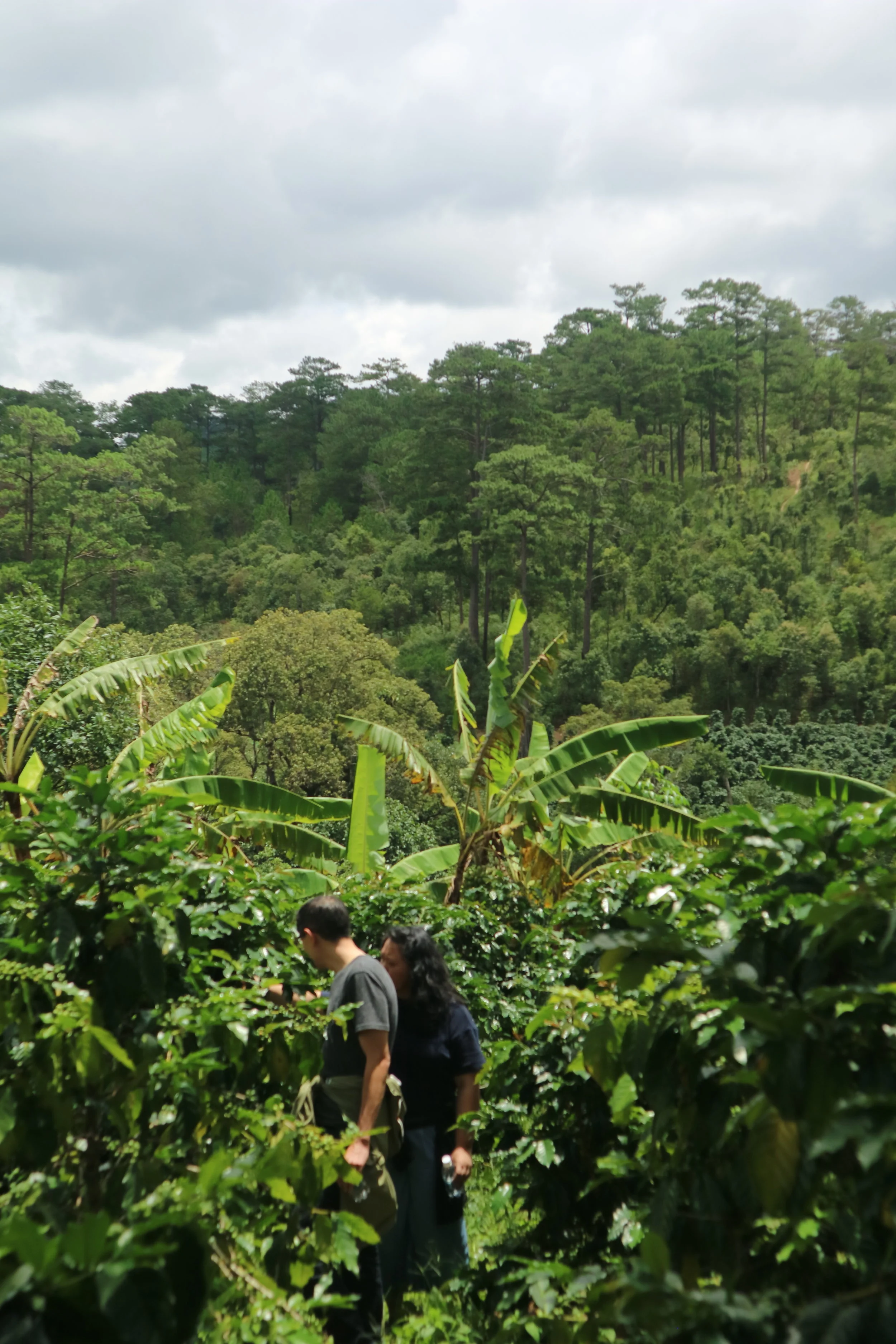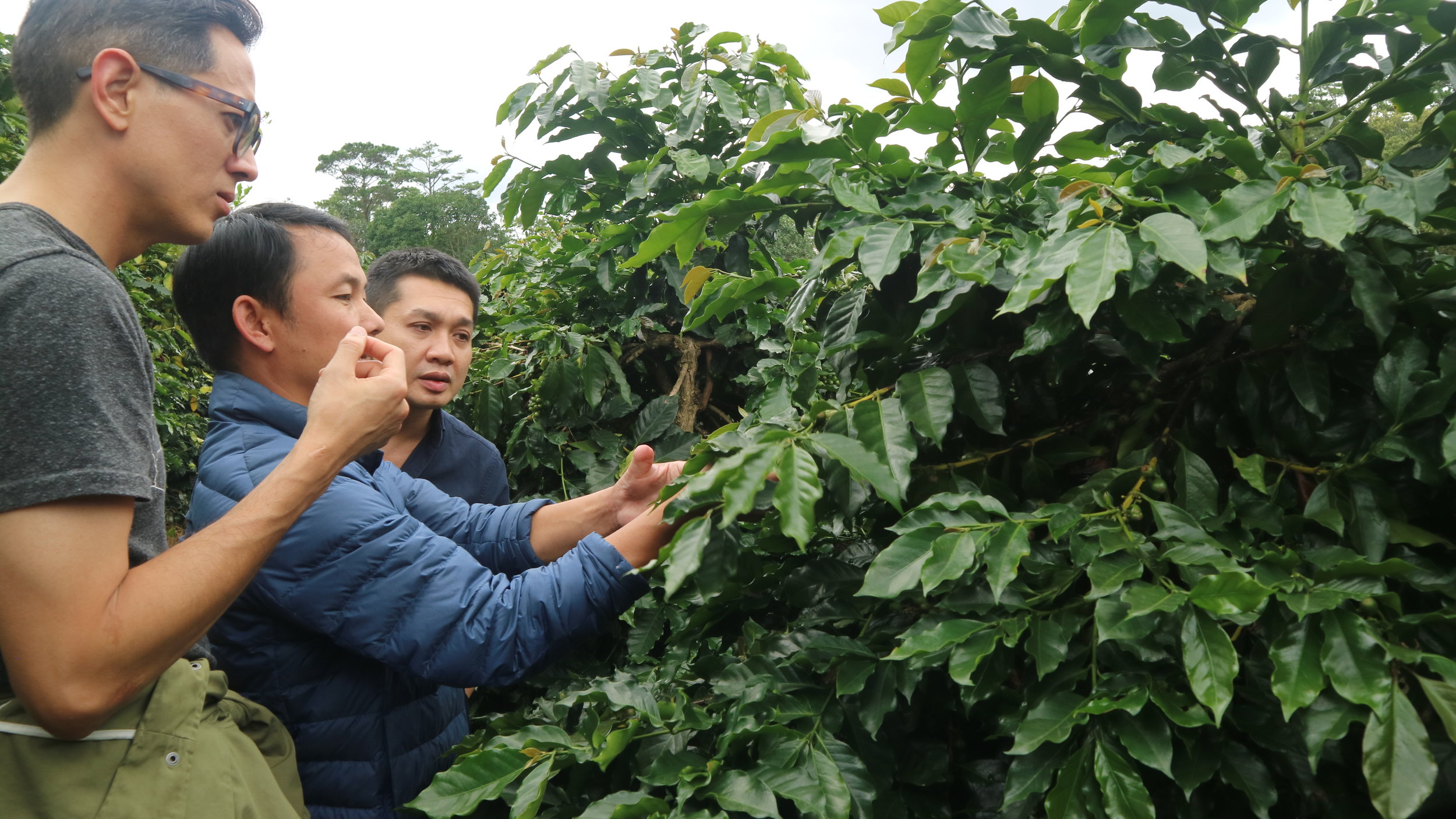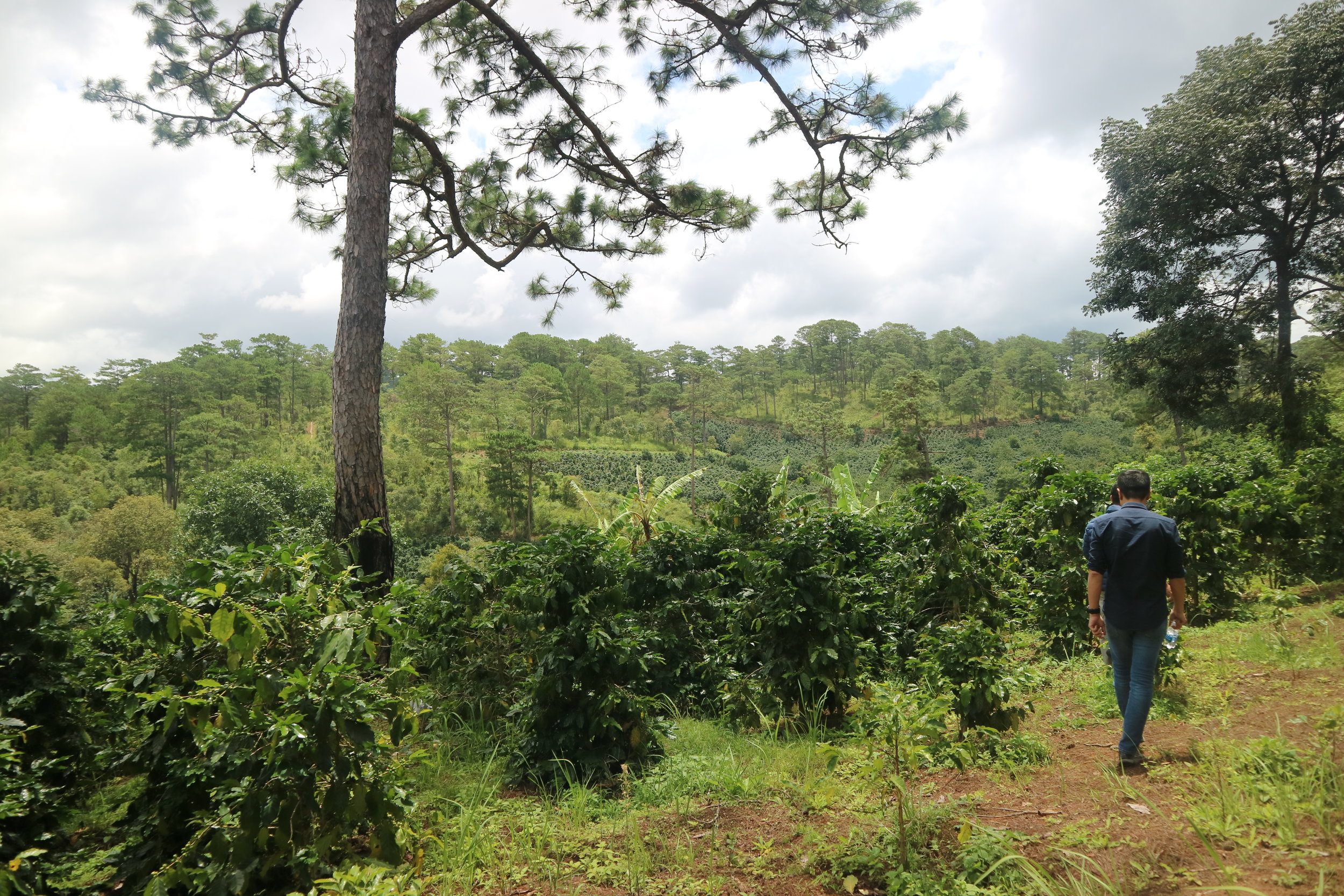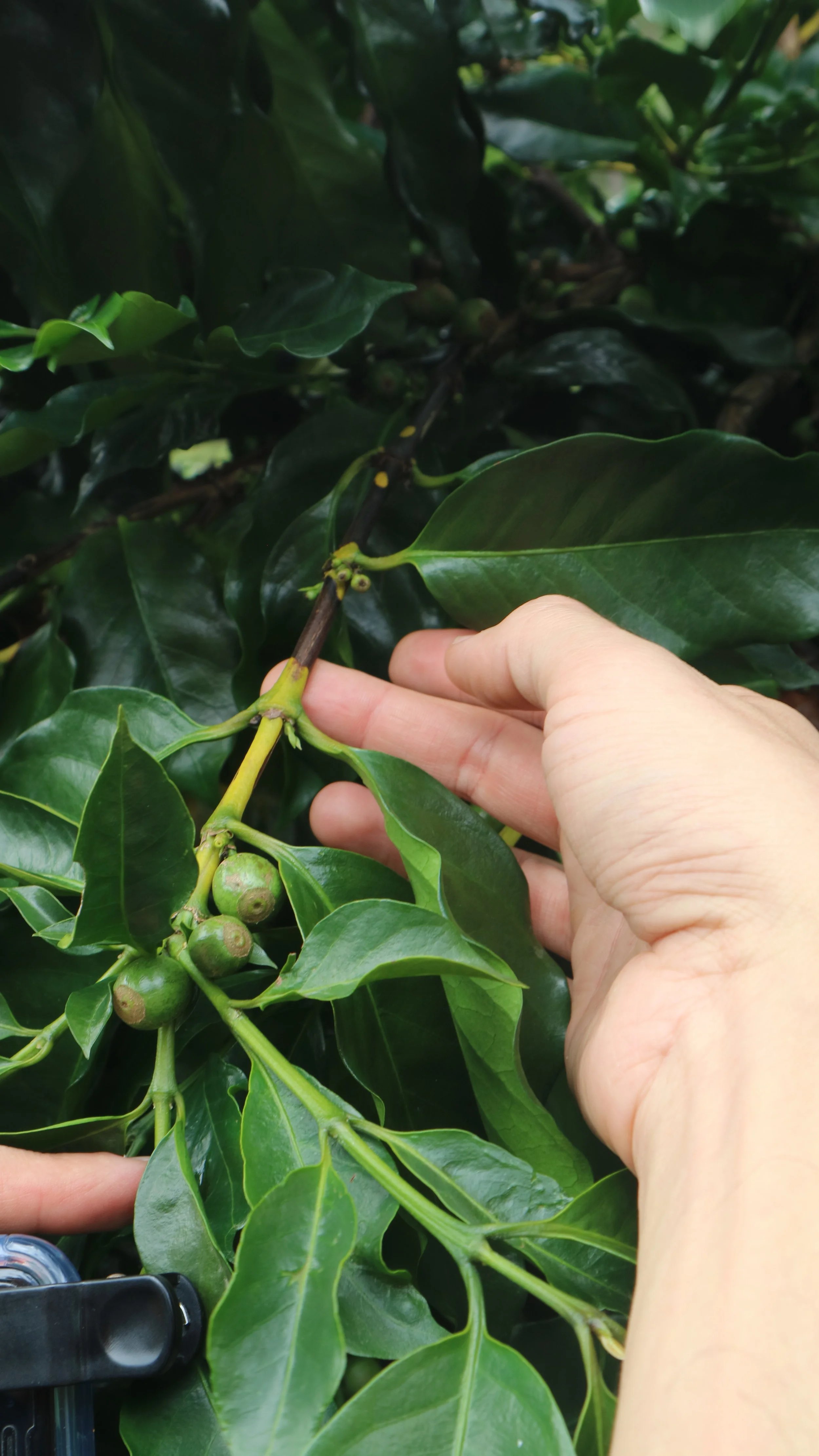Mr Hung's Farm
I was first introduced to Mr Hung Pham in 2017 on a 10-day “vacation” I took from my day job at Modbar. It was a nonstop affair consisting of back-to-back-to-back days with no regard for jetlag. I was on a mission to get in as much catchup and update time as possible. Things in Vietnam move very quickly, and having been away for over a year and a half til then, I’d missed out on a ton of new developments.
Before founding La Viet, Quang Tran was a professor at Dalat University, where he met Mr Hung, an administrator with an interest in farming. Quang didn’t know it then, but Hung had an eye on buying a plot of land in an area just outside of the city that was ideal for growing coffee.
The commodity price for arabica coffee was relatively high at that time, so Hung took the plunge and found some local coffee seedling distributors who sold him a variety of arabica trees of indeterminate provenance.
Since then it’s been technically challenging - a plunging commodity price and a succession of coffee pests - but he found a passion for and creative outlet in coffee itself.
By the time they’d run into one another again, Quang had founded a growing specialty coffee company and could offer him some relief from the issues facing his investment, especially that of the volatile commodity market.
Those of us steeped in the specialty coffee story know this quite well - good farming practices, selective harvesting, careful processing and storage will fetch a higher unit price than the typical high-yield market no matter where the price sits. Quang could guarantee Hung some stability around covering his production costs, but there were (and are) other challenges to overcome.
Hung had just dialed in his fertilization and farm management regimen when a new pest, the mirid bug, decided to cross over from its preferred snack, the tea leaf, into the coffee lands. Also known as the Miridae, capsid bug, mosquito bug, leaf bug, the little critters are fast and do tons of damage. There are plenty of photos online available - I’m just not fast enough a photographer to catch one on the coffee trees.
Clockwise from top left: Kalsada Coffee’s Carmel Laurino and me trying to learn a thing; Mr Hung dropping some knowledge on me and Dung; Branch Inspection; Dung walks along the plot perimeter.
The bugs have a preference for new plant tissues and sap, sometimes transmitting viral plant diseases in the process. For coffee, this results in a plant response that halts flower and fruit production. Instead, the tree focuses nutrients into creating tons of new shoots and lots of new leaves. New leaves appear curled, mangled, and with dark dimples on the surfaces. New buds are nonexistent, and secondary branches begin to sag on the tree. The first year Hung noticed a problem, his harvest was already down by more than 30%. This number increased to over 40% the following year before he found an anti-insect regimen that worked.
The mirid is still around, and is a problem for most of the coffee farmers in the area these days. A low market price for coffee is causing growers to invest less in their farms, especially when they’re so riddled with issues such as this little bug. It’s enough to cause them to seek employment away from farms for a season or two (or for good), further exacerbating the infestation. For example, if Hung sprays insecticide and his neighbors don’t, the bugs just go next door to wait for the poison or repellent to disappear (usually the next time it rains).
Meanwhile, cash-strapped growers are dropping out or switching to other crops, further reducing the potential volume for arabica in a world of increasing consumer demand for premium and specialty coffee. Market prices (hovering near all-time lows), real estate (which is continuing to rise in value), and government initiatives (focused on high yields rather than long term sustainability) combine to create an inevitable shortage of arabica in the region. Macro economically, this may be the necessary market correction that brings prices back into alignment with production costs. On the individual level, especially at both ends of the supply chain (grower and consumer), it’s going to be disruptive. For the grower, they’ll be faced with some decisions - stick with coffee or switch to another crop? Diversify? Find ways to capture more value? For the buyer, roaster, and consumer, this means higher prices and lower availability, the former being a long overdue correction for the industry as a whole (at least in the opinion of myself and every grower I’ve ever spoken with).
It’s going to take a community (and regional) effort to get rid of these pests, and a global effort to solve the bigger economic issues.
Hung’s open minded and adept approach to coffee production has led him to collaborate with some of the most forward-thinking roasters in Saigon in addition to La Viet - including The Workshop and Bosgaurus - who work with him to conduct processing experiments that sometimes yield very exciting results, and award him with good prices to cover his efforts. Clever processing aside, his coffee is just good; although “good” isn’t enough for Mr Hung. He continues to explore and collaborate, taking risks that few coffee growers can (or should). Luckily his collaborative, community-oriented spirit leads him to share his successes with others in the area. Mr Hung is intelligent and agile enough to face his technical challenges with grace, overcoming them as they arise. But, he’s one of the privileged few farmers with a steady day job. His livelihood doesn’t depend on the farm’s income alone, and as long as it doesn’t break the bank he’s happy to keep improving it. His work can hopefully bring knowledge and support to other growers in the region, perhaps helping more of them to convert to a high quality (vs high yield) approach. The community that he’s built around himself definitely helps him to stay engaged and hopeful, and the feeling is definitely mutual.


